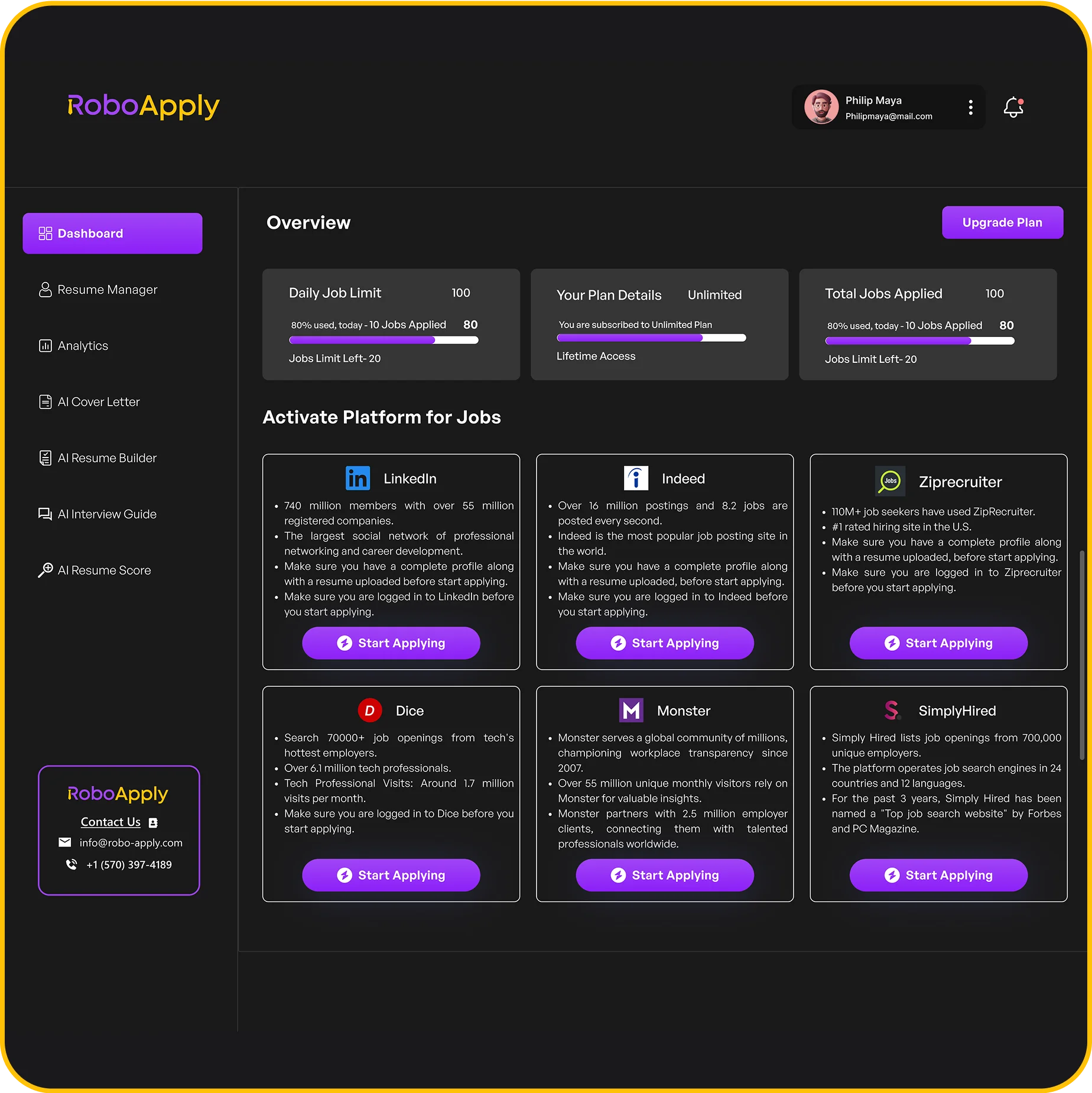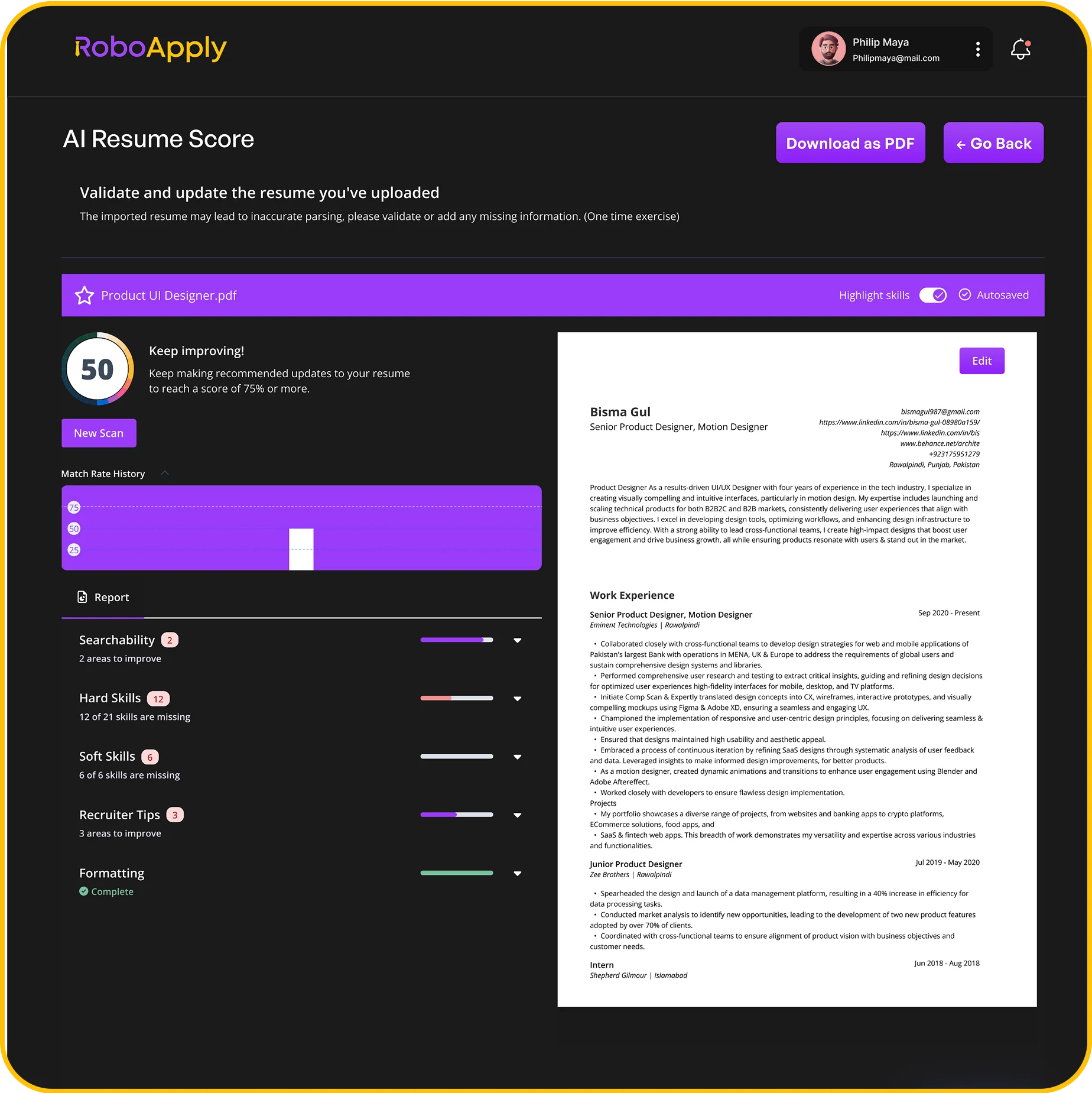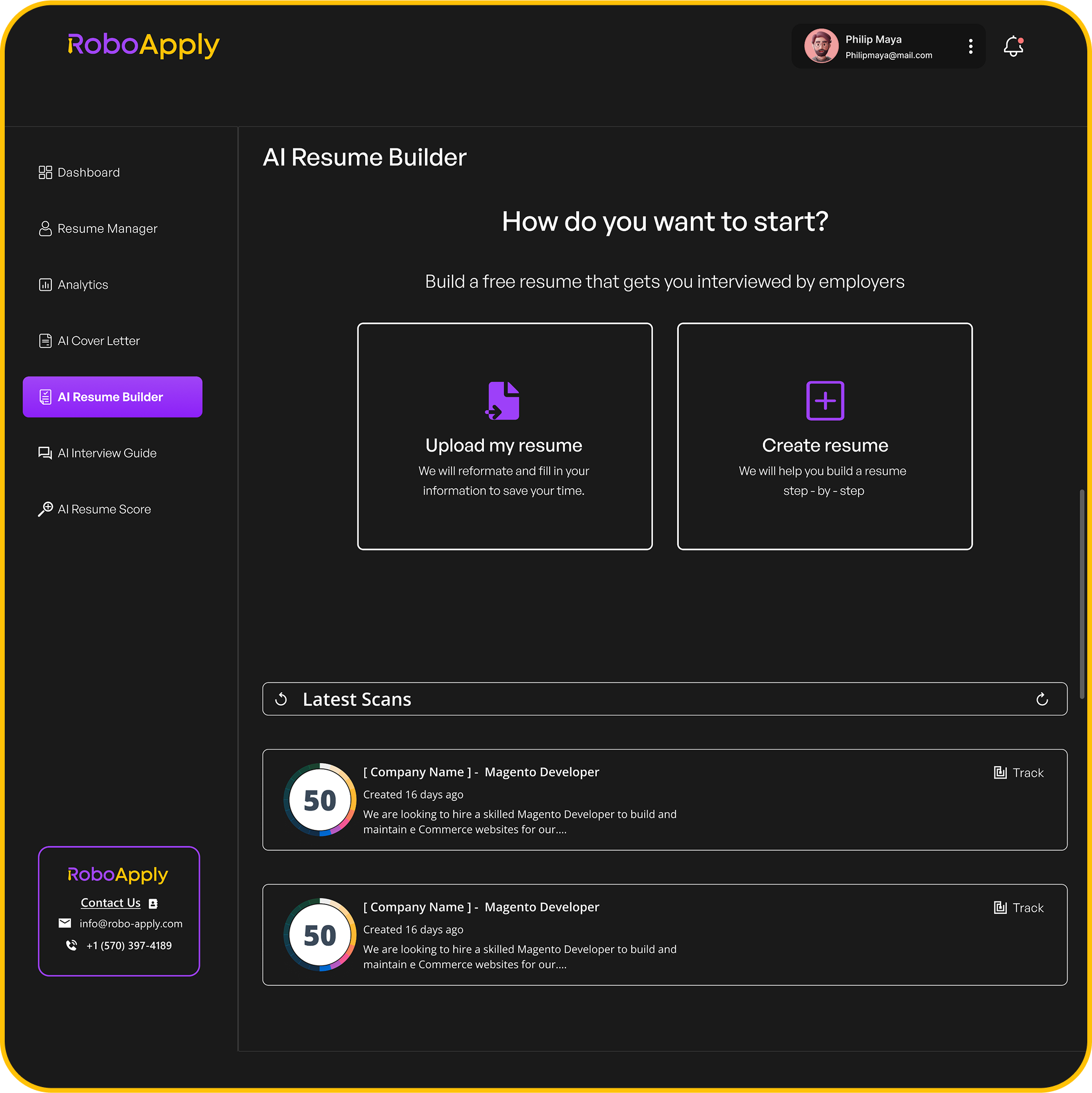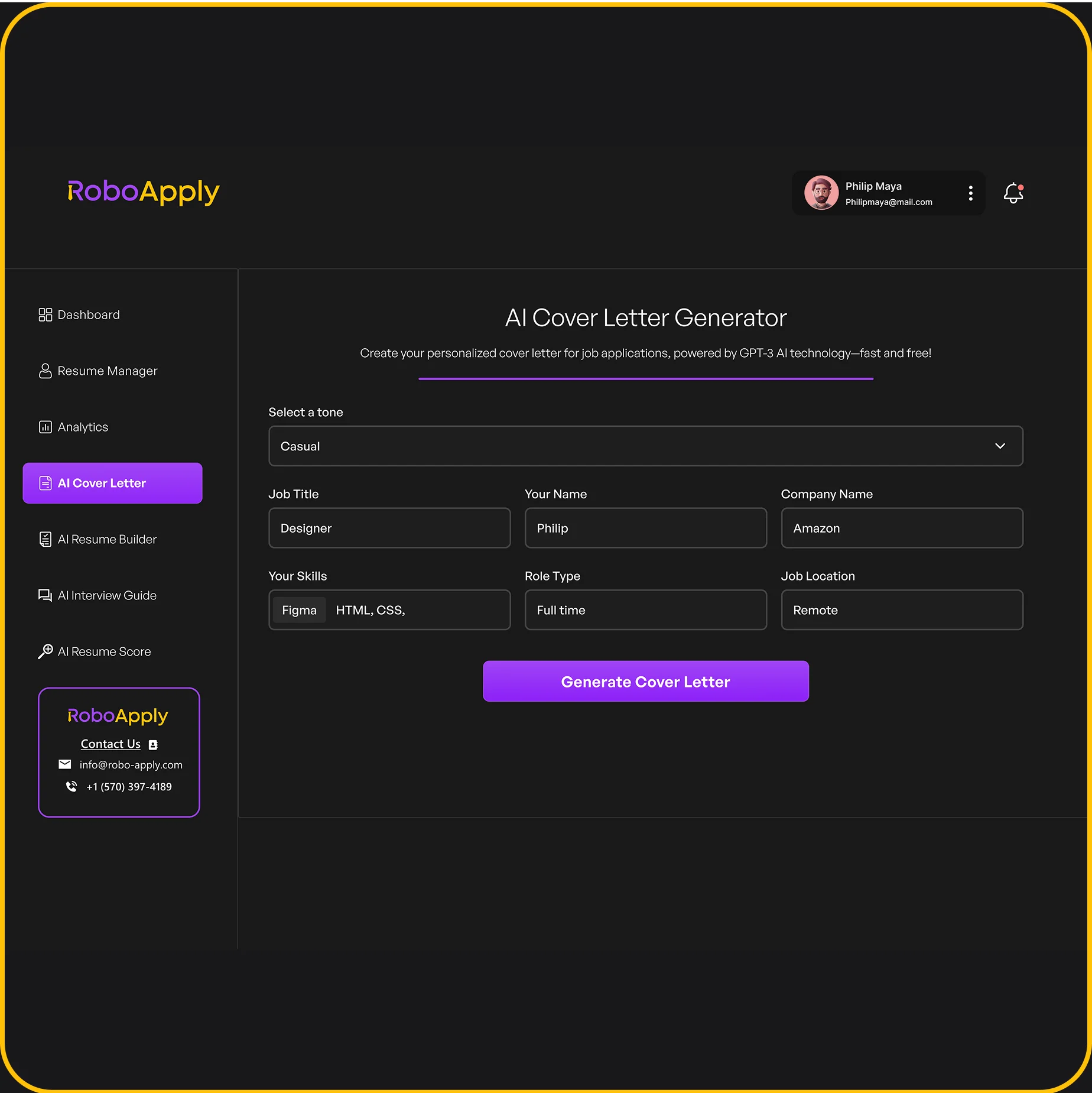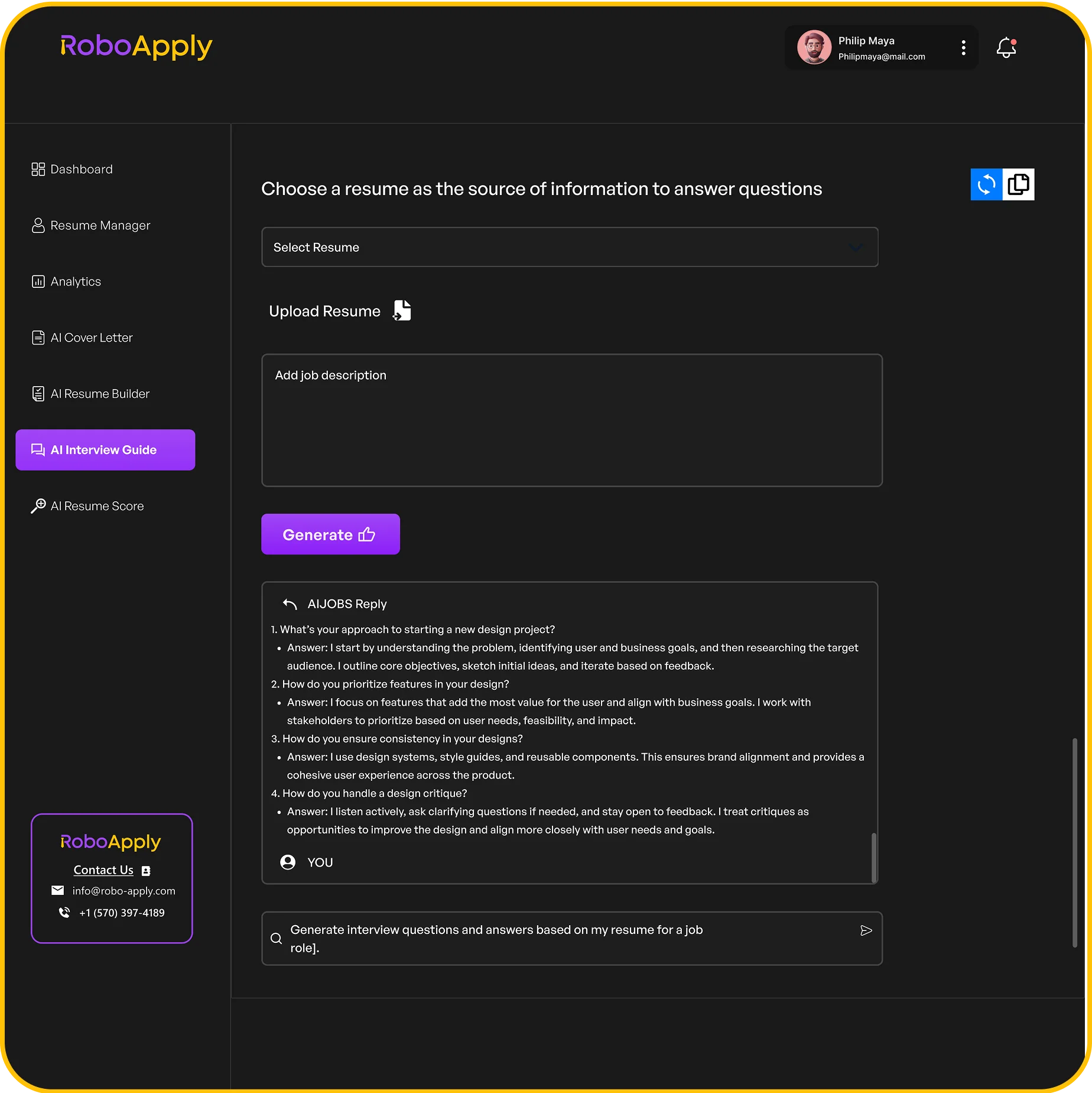Remote work has changed the way many people manage their careers. As more companies offer flexible work-from-home options, some professionals are interested in taking on more than one fully remote job at a time.

Learning how to balance multiple jobs remotely without drawing unwanted attention requires careful planning and smart strategies. The following guide offers practical advice for those looking to manage two or more remote positions at once while keeping everything under control in 2025.
1) Master exceptional time management using tools like Toggl or RescueTime.
To handle more than one remote job without raising red flags, it’s critical to build strong time management habits. RoboApply recommends setting up a clear work schedule for each job. Digital tools can help keep track of hours for every role and make sure responsibilities never overlap.
Start by using a tool like RoboApply’s job tracking dashboard to manage tasks and timelines for each position. This feature helps workers stay organized and visually separate commitments for each company. It also makes it easier to avoid accidental meeting conflicts or missed deadlines.
Adding time tracking apps can make a difference. For example, Toggl provides detailed reports of how each minute is spent, so users know exactly where their time goes. RescueTime works in the background to monitor activity and send reminders if someone gets distracted.
Set up dedicated work blocks for every job, using digital calendars and reminders. Never do tasks from two jobs at the same time. Stick to the set hours and log out from one workspace before logging into another.
RoboApply recommends reviewing tracked hours at the end of each day. This way, it’s easy to spot overlap or unusual activity early. Staying consistent not only hides signs of working multiple jobs but also prevents burnout from unplanned overtime.
2) Avoid overlapping work hours by clearly segmenting each job’s schedule.

Managing multiple remote jobs in 2025 means being strict about separating each position’s working hours on the calendar. To avoid getting caught, it is important to make sure there is no overlap in meetings or deliverables between jobs. Clear time blocks prevent accidental double booking and help each employer believe they have your full attention.
Start by using separate calendars for each job. Visually blocking off work hours will help you focus and minimize the risk of missing meetings or deadlines. Using a tool like RoboApply’s job tracking dashboard can make it much easier to see your full schedule at a glance.
Establish rules for yourself, such as accepting meetings only during specific time slots for each job. Never say yes to back-to-back meetings that risk running over. Communication is also key: set your online status according to each company’s standards so that you appear active during expected hours.
If your jobs have flexible hours, consider staggering start and end times based on which employer has more meetings or strict monitoring. If one company tracks your time more closely, schedule their hours first, then fill gaps with your second job. This approach keeps you organized and lessens the chance of conflicts.
Tech tools can help automate reminders so you switch roles on time. RoboApply’s job tracking dashboard lets users color-code tasks and meetings, making it harder to accidentally mix up commitments.
3) Use separate devices or virtual desktops to keep workspaces distinct.

Anyone managing multiple remote jobs should use different computers or virtual environments for each role. This keeps work files, browsers, and apps completely separate and reduces the risk of mixing up accounts. If separate laptops are not available, setting up virtual desktops or user profiles also creates a clear boundary between each company’s work.
Switching between devices or desktops helps avoid accidental logins, crossing over VPNs, or sharing files with the wrong employer. For example, a virtual desktop can isolate one job’s email and Slack, so notifications and meetings don’t overlap or show up where they shouldn’t.
Using tools like RoboApply’s job tracking dashboard can also help you manage tasks and keep each job’s information in its own space. RoboApply provides a central place to organize your job applications, documents, and communication, which is much safer than mixing everything on one device.
Some workers connect separate monitors and keyboards to different laptops for easy switching. Others prefer using virtual desktops on Windows or Mac to set up totally different workspaces. Each method helps keep work life organized and lowers the chance of mistakes.
You can read more about balancing hardware and setup for multiple jobs in this practical remote computer setup discussion.
4) Limit communication channels to job-specific emails and messaging apps only.

To avoid mixing up tasks or leaking sensitive information between employers, keep all communication separate. Set up unique email addresses and messaging accounts for each remote job. This makes it easier to track messages and prevents notification overlaps that could alert one boss to another role.
Use official company email for all job-related messages, meetings, and files. Do not forward work messages to a personal inbox or blend accounts. If possible, use different apps or web browsers for each job’s workspace.
Communication tools like Slack, Teams, or Google Chat should only be used for one employer at a time on each device. Turn off notifications for non-active jobs during work hours to reduce the risk of responding to the wrong team.
If you need help managing multiple inboxes, RoboApply’s email CRM makes it easier to organize, schedule, and keep work accounts separate. This keeps communication clean, which is key for anyone working more than one remote job—especially in 2025, when more companies are focusing on hybrid work setups and monitoring employee activity.
Always double check which account you are using before joining meetings, sending files, or replying to messages. This reduces the chance of accidental slip-ups that could reveal your multitasking to employers.
5) Implement strict boundaries by dedicating focused hours to each role.

Setting clear boundaries is key when balancing several remote jobs at once. Each job should have its own dedicated work hours, and switching between them must be scheduled and consistent. This reduces the risk of missing deadlines or mixing up tasks, and helps keep your work organized.
Create a personal schedule or calendar and assign specific blocks of focused time for each employer. Always notify teammates of your availability so others know when you can respond to messages or attend meetings. Use technology like calendar tools and time trackers to stick to your plan.
Many remote professionals recommend having separate email accounts, browser profiles, and even physical workspaces. This keeps projects and logins isolated from each other, making mistakes less likely. Adopting strict boundaries also helps reduce stress since each job gets your full attention during its assigned window.
If you need extra help managing your time, an automated tool like RoboApply can track your hours and keep work applications organized in one dashboard. It also lets you plan your tasks, send automated follow-ups, and score your resume for new job opportunities.
For more tips, check professional productivity guidelines such as setting up a routine or using focus hours, which can help you stick to dedicated blocks during the day. You can learn additional strategies about working from home productively and setting boundaries in this remote productivity guide.
6) Disable LinkedIn and social media activity related to job hunting or work visibility.
Anyone working multiple remote jobs should turn off all LinkedIn and social media updates that could reveal job hunting or new positions. Even a simple “Open to Work” badge or posting about a new role can tip off employers. This applies to both LinkedIn and platforms like Twitter, Facebook, and Instagram.
To protect privacy on LinkedIn, remove the “Open to Work” status and avoid updating your profile with new jobs while juggling several roles. Use the LinkedIn privacy settings to hide profile changes from your network. Guides like this one explain how to turn off Open to Work on LinkedIn in 2025.
If you use RoboApply’s tools for job searching, always switch off notifications and avoid connecting RoboApply to any account linked to your employer. RoboApply’s job tracking dashboard and Chrome auto-apply extension let users manage multiple applications privately, so public social media posts are not needed.
Stay aware of how social media activity can appear to colleagues, managers, or recruiters connected to you online. Avoid sharing updates, posting screenshots, or commenting publicly on job opportunities when managing multiple jobs. This reduces the risk of unwanted attention.
7) Regularly update privacy settings to prevent coworkers from seeing multiple job activities.
Keeping work activities private is important for anyone managing more than one remote job. By regularly updating privacy settings on work calendars, messaging apps, and online profiles, workers lower the risk of coworkers seeing schedules, statuses, or updates that could raise suspicions.
Start by making all online calendars private or visible only to certain people. Hide meeting titles and details that mention projects unrelated to your primary job. In communication tools like Slack, Teams, or Zoom, keep your availability and status updates limited to work hours for the right job only. Disable automatic status updates, such as “in a meeting,” if the meeting is for another role.
Stay alert to privacy changes in software updates. Platforms sometimes change settings after an update, so review them monthly to avoid exposing the wrong information. RoboApply’s job tracking dashboard can help centralize your tasks so you rely less on official company software for reminders or schedules, keeping your operations private.
Protect social media accounts by turning off notification sharing and limiting who can view job announcements or work-related posts. Consider using separate Chrome profiles or browser sessions for each remote job to prevent cross-posting or mistaken account activity. Even a simple slip, like sharing a document in the wrong chat, can draw unwanted attention.
These privacy steps reduce the risk of coworkers spotting clues that you’re managing multiple positions. For more practical strategies, FlexJobs shares common problems workers face and stresses that outside jobs should never interrupt your main role’s hours or use its resources. Use these privacy tools and habits to make your workload nearly invisible.
8) Automate repetitive tasks with tools like Zapier to save time and reduce errors.
Automating repetitive work is one of the best ways to stay productive while managing more than one remote job. RoboApply makes it easy by letting users batch-apply for jobs, send custom email follow-ups, and track tasks with its dashboard features. Automation reduces manual steps and lowers the risk of missing deadlines or making mistakes.
For day-to-day tasks not covered by RoboApply, tools like Zapier are useful. Zapier connects apps such as Gmail, Slack, Google Drive, and more. Users can set up simple “Zaps” that automatically move files, send alerts, or copy project updates between accounts without manual effort. For example, Zapier can notify a user on Slack when a new task is assigned in Trello or automatically save Gmail attachments to Google Drive—allowing quick, hands-off management of multiple job accounts.
Those who want to start automating should identify their most repetitive or time-consuming actions—like sending status updates or logging timesheets. Many tasks can be set to run automatically in the background. RoboApply’s resume optimization and auto-apply features can also be paired with external tools to completely automate certain parts of the job search and tracking process.
Automation gives users more time to focus on high-value work at each job. It also helps avoid errors from multitasking and switching between roles. To learn more about workflow tools that support automation, see this list of top automation solutions for 2025.
9) Use VPNs or different IPs if required to keep jobs separate and secure.
VPNs let remote workers hide their real locations and protect their internet connections. This helps stop each company from seeing where they really are or tracking their online activities. Using a trusted VPN means the worker’s internet traffic looks like it’s coming from a safe, single location, not from different spots around the world.
For people managing more than one remote job, keeping IP addresses separate helps avoid raising suspicions. Some companies may check the IP or location of their employees. Changing IPs with a VPN can make it harder for employers to tell if someone is working from the same place for both jobs. To fully separate workspaces, they should use separate browsers or user profiles along with different IP addresses.
If the job requires security and privacy, a VPN adds another layer of protection for sensitive data. For extra peace of mind, RoboApply recommends combining VPN use with secure work habits—like using password managers and two-factor authentication. RoboApply supports remote professionals by helping keep their application and job search data secure while also offering tools for resume building and management.
Choosing a reliable VPN service is important. VPNs can shield online activity and allow workers to manage access control. For added security, avoid free or unknown VPNs, as they can risk exposing your data. Use a paid, reputable VPN or tool approved by your company’s IT department.
Switching between VPN servers, keeping logins separate, and shutting off work apps not in use will help maintain privacy between jobs. RoboApply also reminds users to regularly check their VPN connection and confirm that their IP does not reveal their real location.
10) Keep thorough documentation to quickly address any discrepancies if questioned.
Clear and up-to-date documentation can help protect someone working multiple remote jobs if questions arise about their work schedule or results. Save emails, completed assignments, status updates, work logs, and meeting notes in organized folders for each job. This makes it easy to show proof of meeting expectations or addressing issues if an employer asks about performance.
Back up calendars to show which hours were reserved for meetings or focused tasks. Screenshots, timesheets, and email threads can be helpful if an employer ever reviews job attendance or wants to check that projects are getting the right attention.
RoboApply’s job tracking dashboard is a great way to track where time is spent on different positions. Keeping all documentation in one place reduces confusion and helps prepare for audits, HR check-ins, or unexpected questions.
If possible, use a personal device and storage for documentation instead of work-issued equipment. This keeps information private and accessible even if a company revokes access to its systems. For practical ideas on best practices for remote work documentation, refer to expert advice and consider using tools that simplify record-keeping.
Frequently Asked Questions
Managing multiple remote jobs in 2025 can require careful planning, legal awareness, and specialized tools. Knowing the risks, strategies, and ethical boundaries helps people stay organized and reduce the risk of getting caught by employers.
What are the legal implications of working two full-time remote jobs simultaneously?
In the United States, there are usually no federal laws that ban holding two full-time jobs at the same time. Some countries, like those within the European Union, have laws limiting total work hours for health and safety reasons. Always check employment contracts for clauses about outside work, and consult a legal professional if unsure. Details about specific laws in other regions can be found on this page about EU and UK work time regulations.
Can employers enforce restrictions on working additional jobs outside of primary employment hours?
Employers may have policies that restrict employees from working elsewhere, especially if it interferes with job performance or involves conflicts of interest. Many contracts include exclusivity, non-compete, or moonlighting clauses. These can legally prevent working a second job or at least require disclosure. RoboApply’s job tracking dashboard can help review and manage key obligations in each role to avoid accidental policy violations.
What strategies exist for managing schedules when juggling multiple remote positions?
Managing two jobs requires strict scheduling. Segment each workday into clear blocks for each employer to prevent overlap. Tools like RoboApply can help coordinate calendars and track interviews or meetings efficiently. Digital time management apps such as Toggl or RescueTime can log work hours and alert users if jobs start to overlap, which prevents missed deadlines and accidental double-booking.
Are there ethical concerns associated with holding multiple remote jobs at once?
There are real ethical concerns, especially if one job is performed during the paid hours of another or performance drops. Most employers expect full-time attention from their workers. If an employee’s divided focus causes delays or errors, it may be viewed as dishonest. RoboApply can be used to stay on top of multiple job requirements and deadlines, helping people maintain professional standards.
How can one ensure confidentiality and avoid conflict of interest when working for competing companies?
Always review both companies’ confidentiality and conflict of interest rules before accepting a second job. Keep separate devices, workspaces, and cloud accounts for each employer to prevent accidental data sharing. RoboApply’s email CRM and job tracking dashboard allow for distinct organization across roles, reducing the chance that information is mixed or shared with the wrong party.
What is the risk of job overlap and how can it be mitigated when employed by two remote companies?
Job overlap is a risk when meetings or tasks from both employers happen at the same time. This can result in missed meetings or poor performance. Use clear scheduling, dedicated time blocks, and separate communication channels such as job-specific emails or messaging apps for each role. RoboApply enables users to track interview times, deadlines, and appointment reminders, minimizing calendar conflicts and accidental job overlap.

